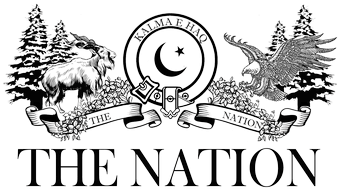KARACHI: In order to decrease global inequalities, the new SDGs call for ending open defecation and achieving universal access to basic services by 2030, states a new report by the World Health Organization (WHO) and UNICEF.
The Joint Monitoring Programme report, Progress on Dri
nking Water, Sanitation and Hygiene: 2017 Update and Sustainable Development Goal Baselines, presents the first global assessment of “safely managed” dri
nking water and sanitation services. The overriding conclusion is that too many people still lack access, particularly in rural areas.
“Safe water, sanitation and hygiene at home should not be a privilege of only those who are rich or live in urban centres,” says Dr Tedros Adhanom Ghebreyesus, Director-General, World Health Organization (WHO). “These are some of the most basic requirements for human health, and all countries have a responsibility to ensure that everyone can access them.”
The reporter further added that some 3 in 10 pe
ople worldwide, or 2.1 billion, lack access to safe, readily available water at home, and 6 in 10, or 4.4 billion, lack safely managed sanitation.
The report introduces and defines the new indicators of safely managed dri
nking water and sanitation services. Estimates of safely managed dri
nking water services, the indicator for SDG target 6.1, are presented for 96 countries including Pakistan, while estimates are provided for safely managed sanitation services (target 6.2) for 84 countries. SDG target 6.2 also includes hygiene, and the JMP has re branded itself as the WHO/UNICEF Joint Monitoring Programme for Water Supply, Sanitation and Hygiene. This first SDG report presents data on the availability of hand washing facilities with soap a
nd water in the home
for 70 countries.
The report finds that in 2015, 29 percent of the global population (2.1 billion people) lacked safely managed dri
nking water services – meaning water at home, available, and safe. 61 percent of the global population (4.5 billion people) lacked safely managed sanitation services – meaning use of a toilet or latrine that leads to treatment or safe disposal of excreta. Data on hand washing were too few to make a global estimate, but in sub-Saharan Africa, 15 percent of the population had access to a hand washing facility with soap a
nd water.
“The 2.1 billion pe
ople without safely managed dri
nking water services includes 1.3 billion pe
ople with basic services, meaning an improved water source located within 30 minutes; 263 million pe
ople with limited services, or an improved water source requiring more than 30 minutes to collect water; 423 million people taking water from unpro
tected wells and springs, and 159 million people collecting untreated surface water from lakes, ponds, rivers and streams,” the report stated.
The 4.5 billion pe
ople without safely managed sanitation services includes 2.1 billion pe
ople with basic services, meaning an improved sanitation facility which is not shared; 600 million pe
ople with limited services, or an improved sanitation facility which is shared; 856 million people using unpro
tected latrines or bucket toilets, and 892 million people practicing open defecation, the reported added.
Published in Daily Times, July 15th , 2017.













